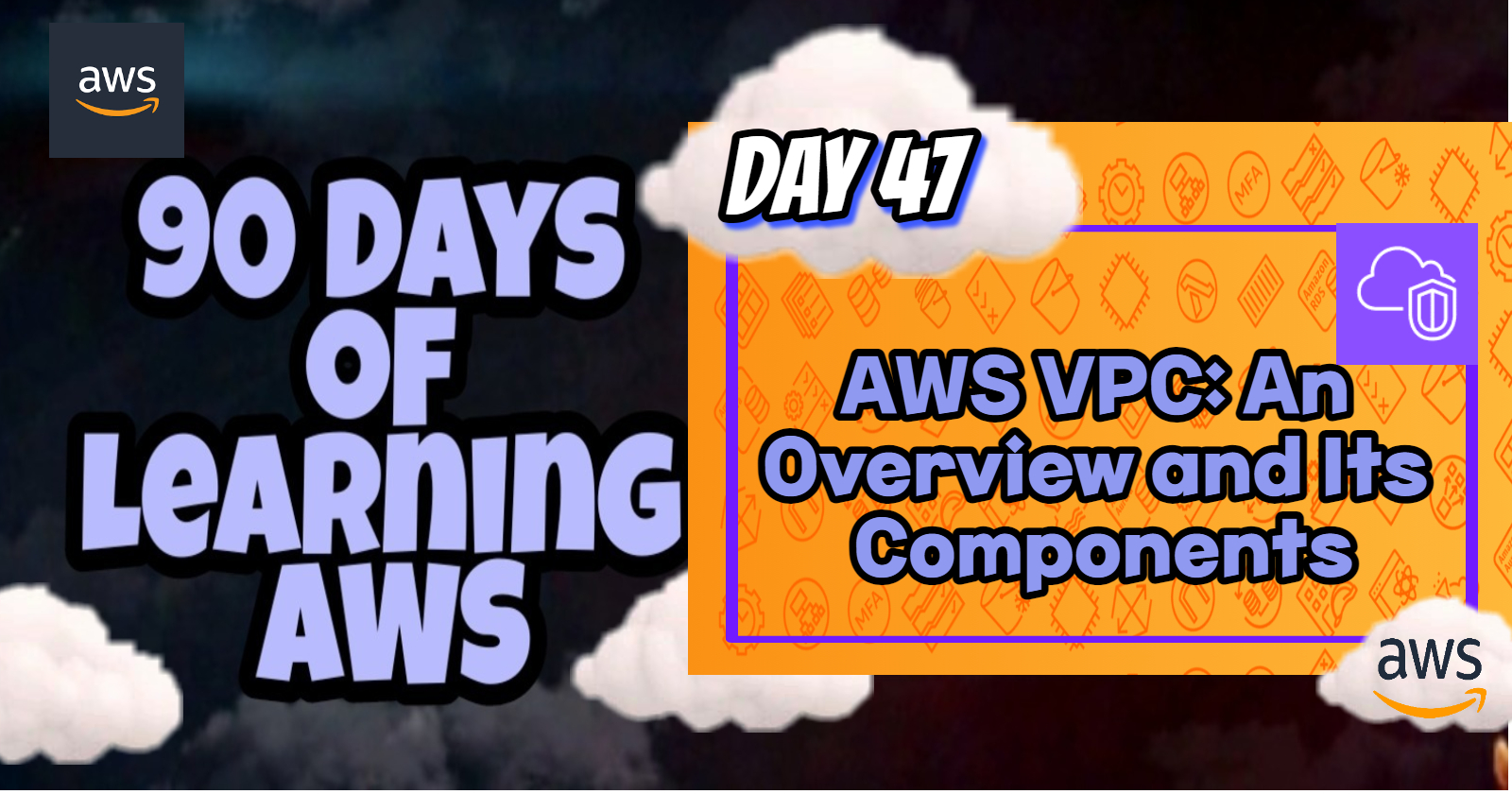AWS VPC: An Overview and Its Components
 Shailesh
ShaileshTable of contents

Introduction
Amazon Virtual Private Cloud (VPC) is a foundational service within AWS, enabling users to create a logically isolated network within the AWS cloud. This network can be configured to closely resemble a traditional network that we would operate in our own data center, complete with control over IP address ranges, subnets, route tables, and network gateways. In this blog post, we'll delve into the core components of AWS VPC and how they interrelate to provide a secure and scalable environment for your cloud-based resources.🛡
Key Components of AWS VPC⚡
Subnets
Subnets are segments of a VPC's IP address range that can be allocated to different availability zones (AZs) within a region. They can be classified as public, private, or VPN-only subnets.
Public Subnet: A subnet that has a route to an internet gateway, allowing resources within it to be accessed from the internet.
Private Subnet: A subnet without a route to the internet gateway, ensuring resources are isolated from direct internet access.
VPN-only Subnet: A subnet that routes traffic to a virtual private gateway, often used for secure communication between an on-premises network and the AWS environment.
Route Tables
Route tables contain a set of rules, called routes, that determine where network traffic is directed.
Each subnet in a VPC must be associated with a route table, which controls the routing of packets destined for various CIDR blocks.

Internet Gateway
An internet gateway is a horizontally scaled, redundant, and highly available VPC component that allows communication between instances in your VPC and the internet.
It serves two purposes: to provide a target in your VPC route tables for internet-routable traffic and to perform network address translation (NAT) for instances that have been assigned public IP addresses.

NAT Gateway
A managed NAT service that provides internet traffic routing for instances in private subnets.
It allows instances in a private subnet to connect to the internet or other AWS services but prevents the internet from initiating connections with those instances.

Security Groups
Security groups act as virtual firewalls for your instances to control inbound and outbound traffic.
They operate at the instance level, allowing you to specify which traffic is allowed to or from the instance.
Network Access Control Lists (NACLs)
NACLs are an additional layer of security that acts as a firewall for controlling traffic in and out of one or more subnets.
Unlike security groups, which operate at the instance level, NACLs operate at the subnet level, providing a stateless filtering mechanism.
VPC Peering
VPC peering allows you to connect two VPCs privately using AWS’s network, enabling instances in different VPCs to communicate with each other as if they were within the same network.
Peering connections can be established between VPCs in the same region or different regions (inter-region VPC peering).
Virtual Private Gateway
A virtual private gateway enables your VPC to connect to your own data center through a VPN connection.
This component is crucial for hybrid cloud setups, where part of your infrastructure is on-premises, and part of it resides in AWS.

AWS PrivateLink
AWS PrivateLink simplifies the security of data shared with applications, by eliminating the exposure of data to the public internet.
It allows you to access services hosted on AWS in a highly available and scalable manner, while keeping your network traffic within the AWS network.
Elastic IP Addresses
Elastic IP addresses are static, public IPv4 addresses designed for dynamic cloud computing.
An Elastic IP address is associated with your AWS account, not a particular instance, and can be remapped as needed.
Conclusion💡
Amazon VPC offers robust network isolation and security capabilities, making it a critical component for any AWS infrastructure. By understanding and effectively configuring the various components of VPC, you can ensure that your cloud environment is secure, scalable, and highly available. Leveraging VPCs allows you to replicate traditional network setups in the cloud, with the added benefits of AWS's scalability and flexibility. In future blogs, we will go through each component in detail.
Stay tuned for more AWS insights!!⚜ If you found this blog helpful, share it with your network! 🌐😊
Happy cloud computing! ☁️🚀
Subscribe to my newsletter
Read articles from Shailesh directly inside your inbox. Subscribe to the newsletter, and don't miss out.
Written by

Shailesh
Shailesh
As a Solution Architect, I am responsible for designing and implementing scalable, secure, and efficient IT solutions. My key responsibilities include: 🔸Analysing business requirements and translating them into technical solutions. 🔸Developing comprehensive architectural plans to meet organizational goals. 🔸Ensuring seamless integration of new technologies with existing systems. 🔸Overseeing the implementation of projects to ensure alignment with design. 🔸Providing technical leadership and guidance to development teams. 🔸Conducting performance assessments and optimizing solutions for efficiency. 🔸Maintaining a keen focus on security, compliance, and best practices. Actively exploring new technologies and continuously refining strategies to drive innovation and excellence.